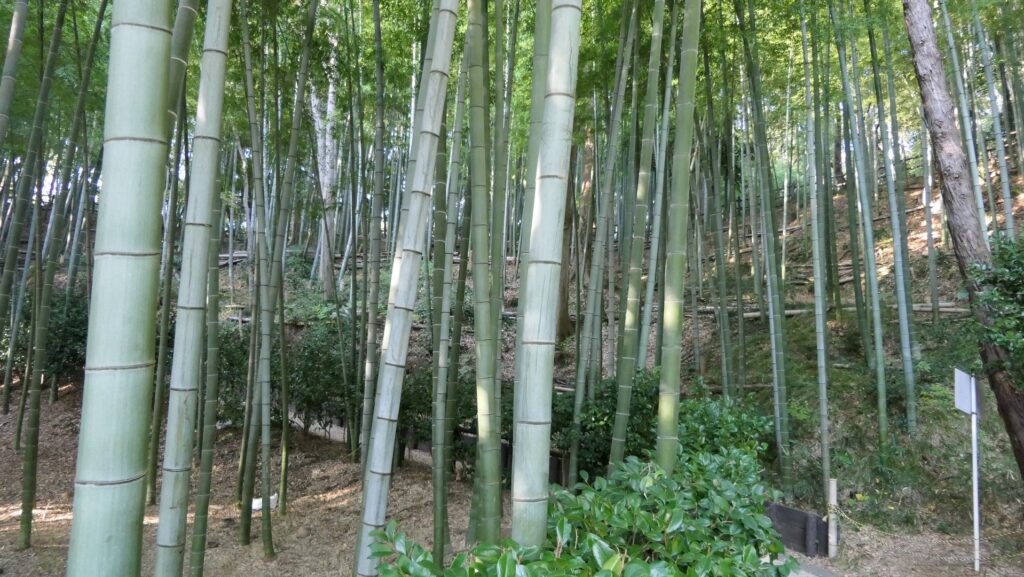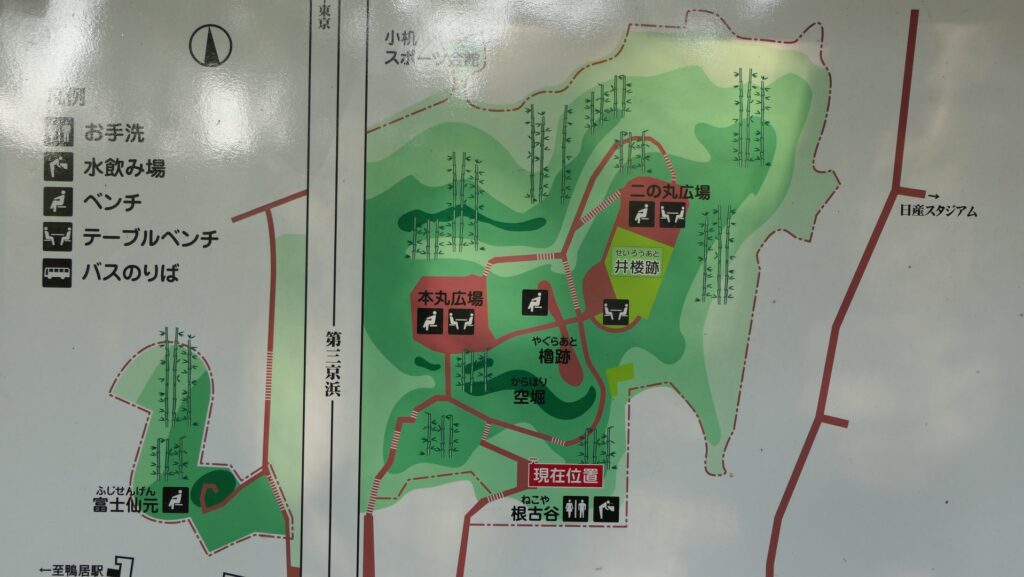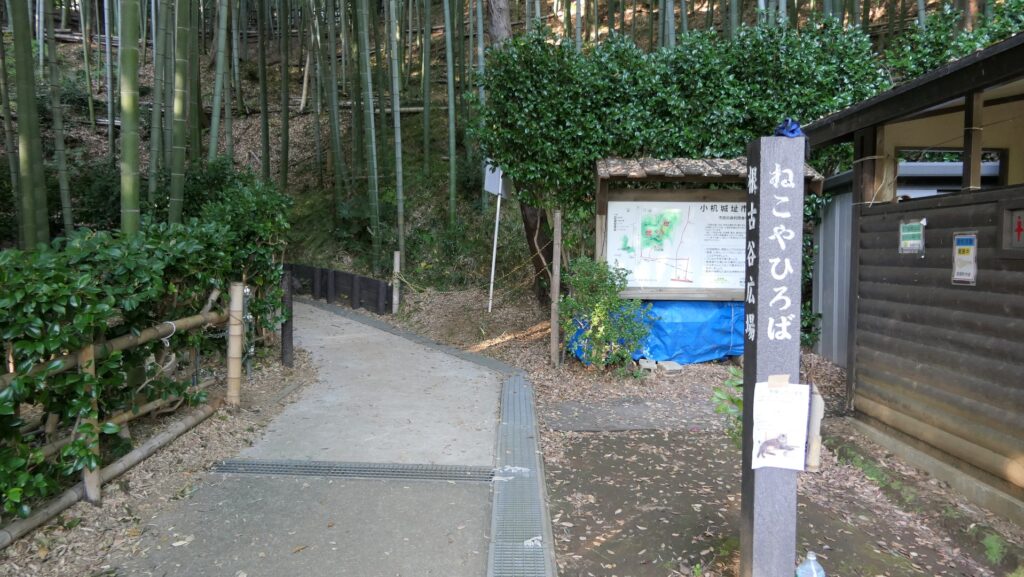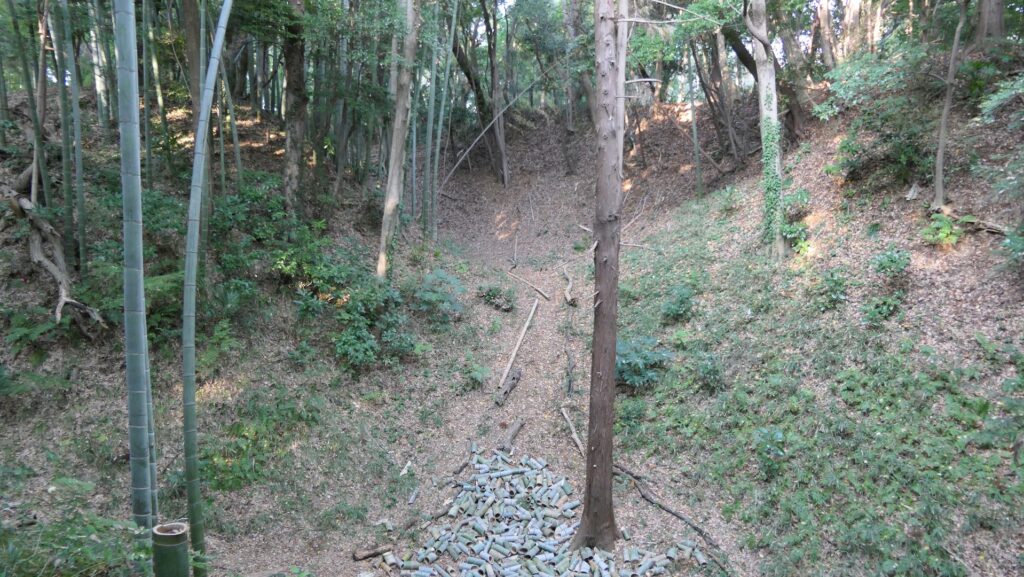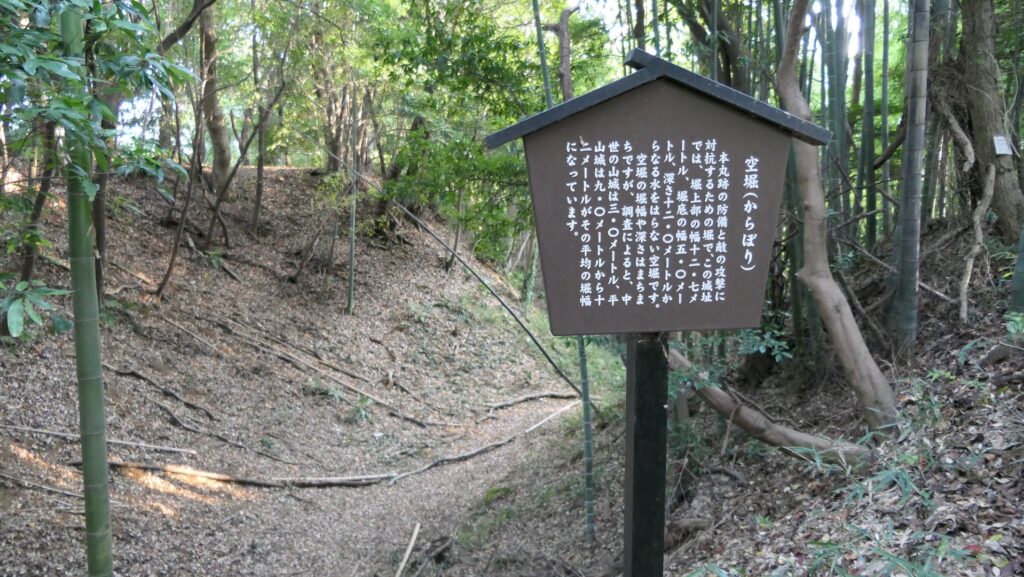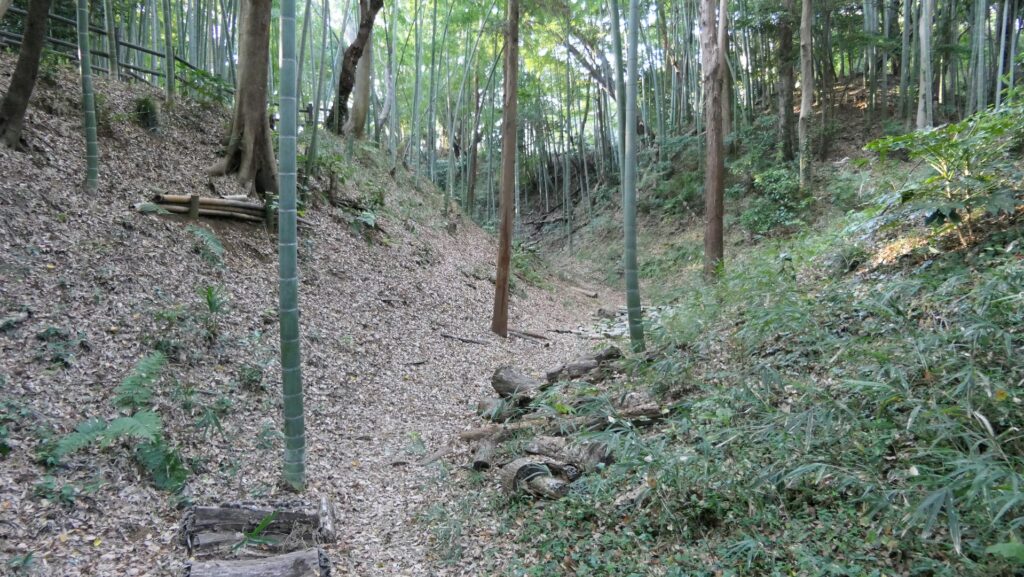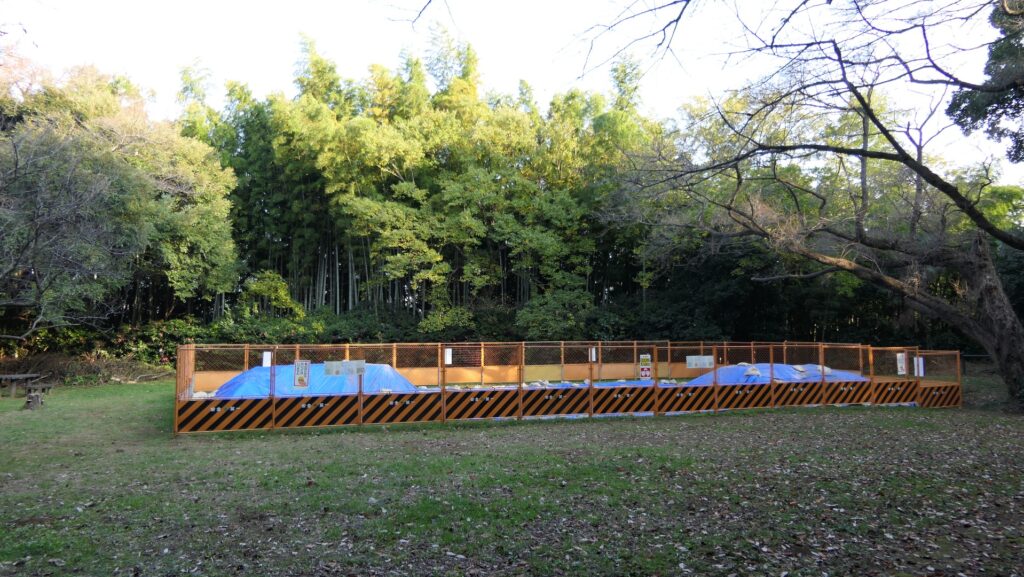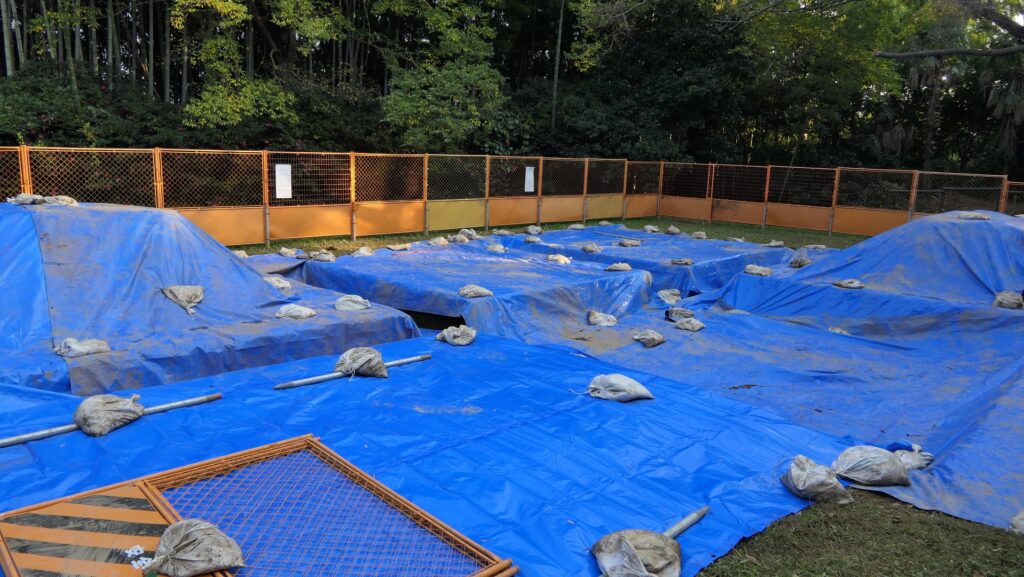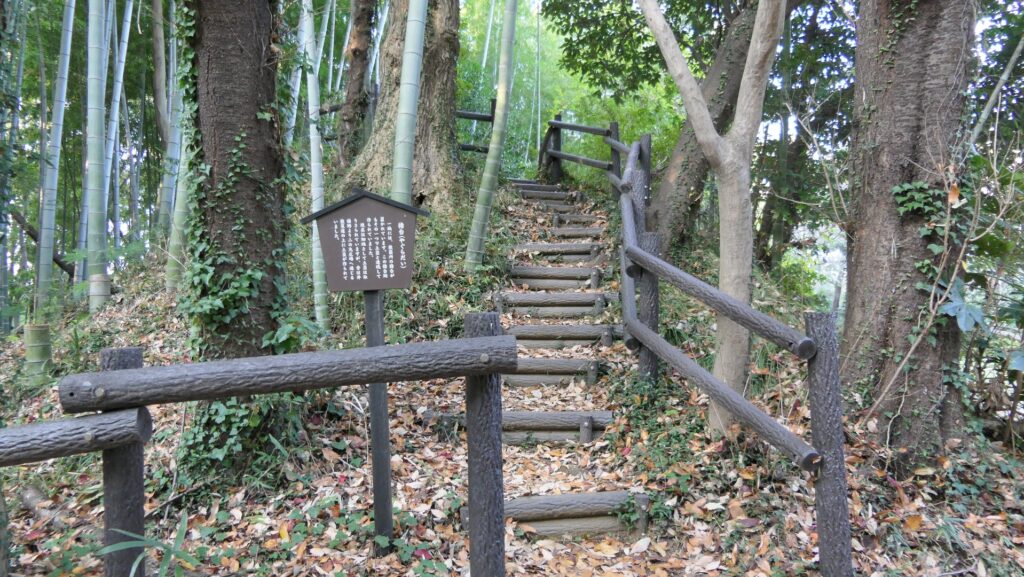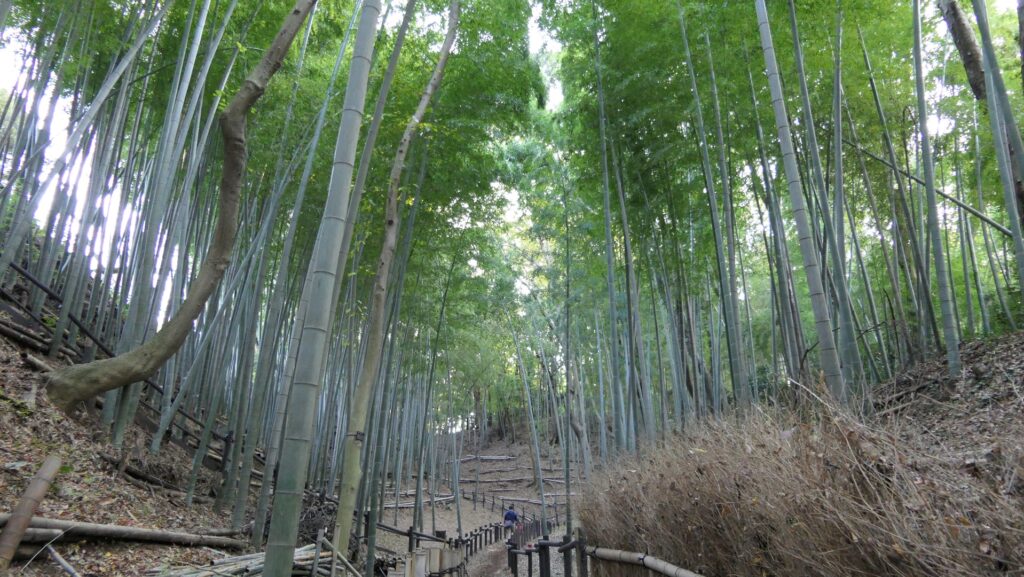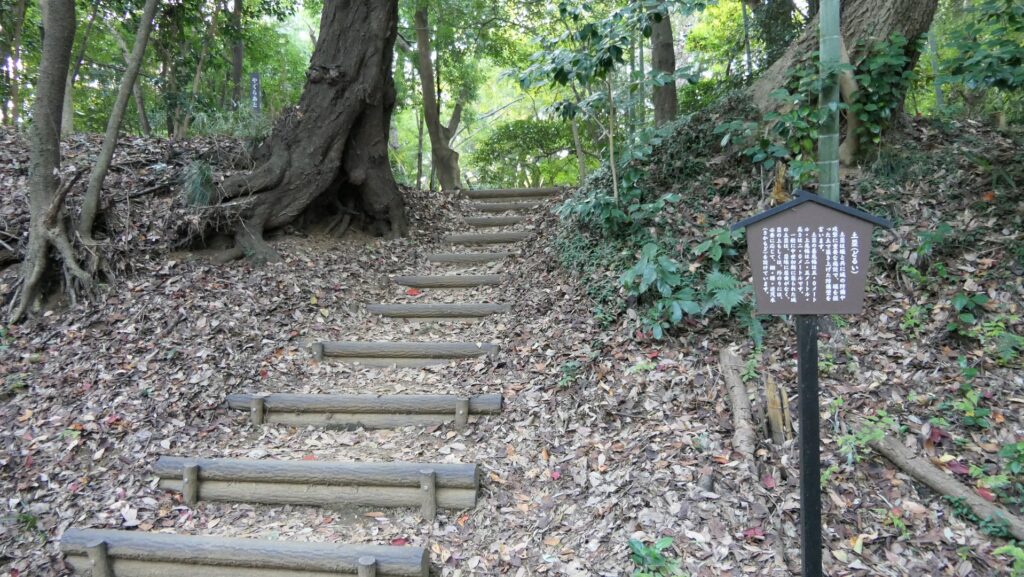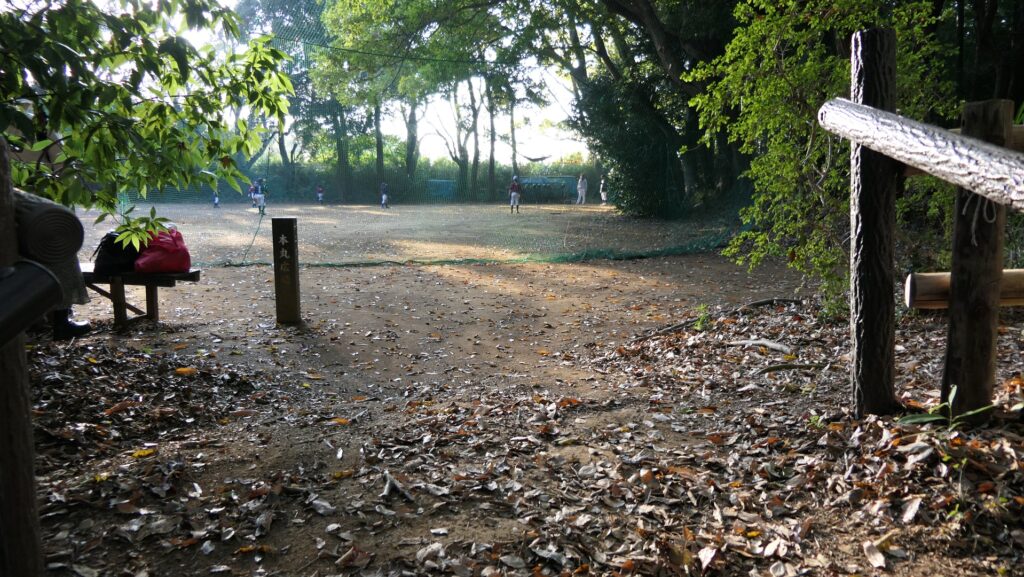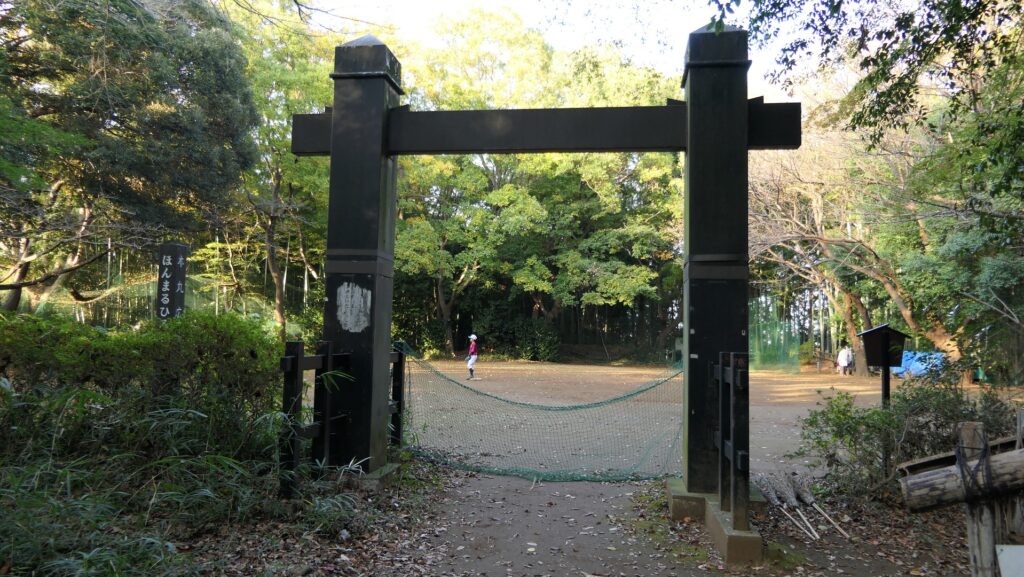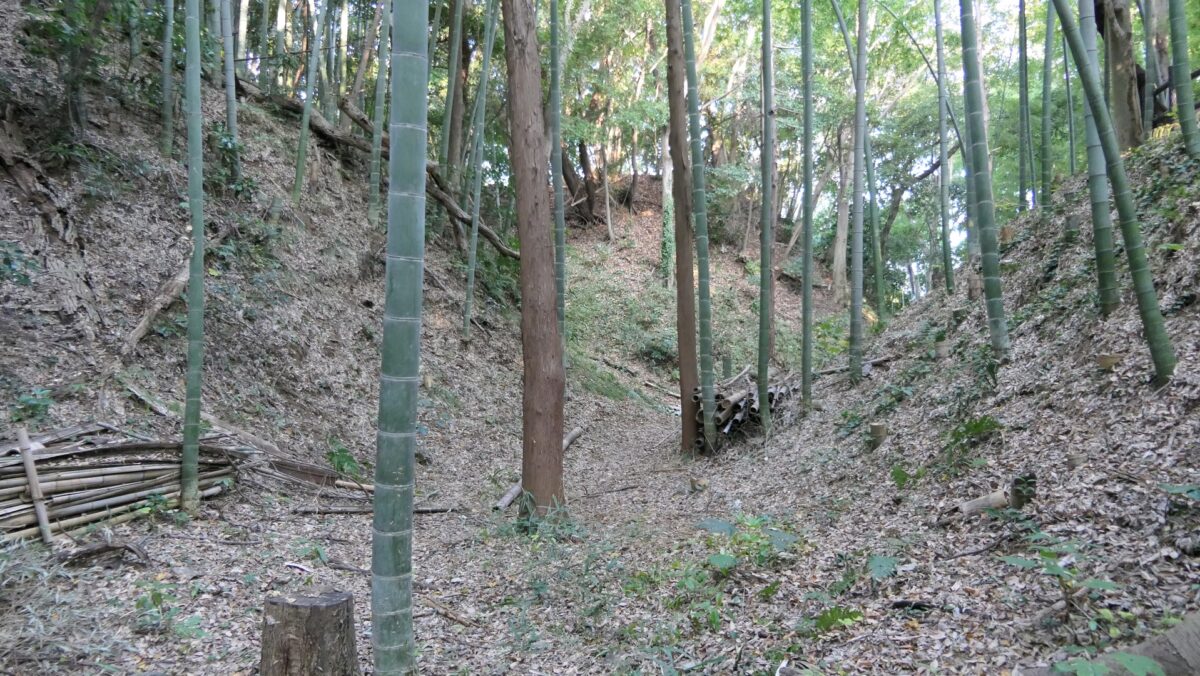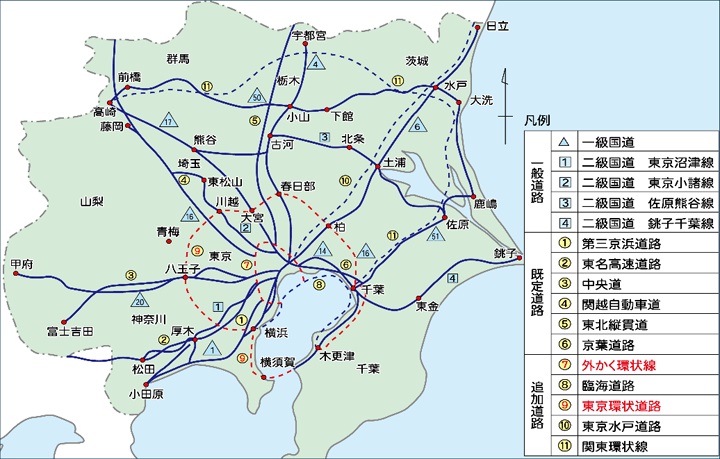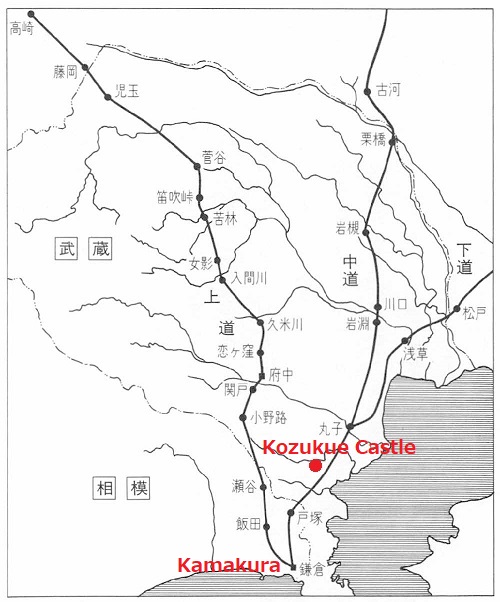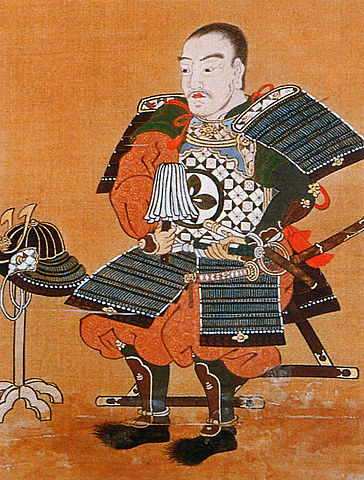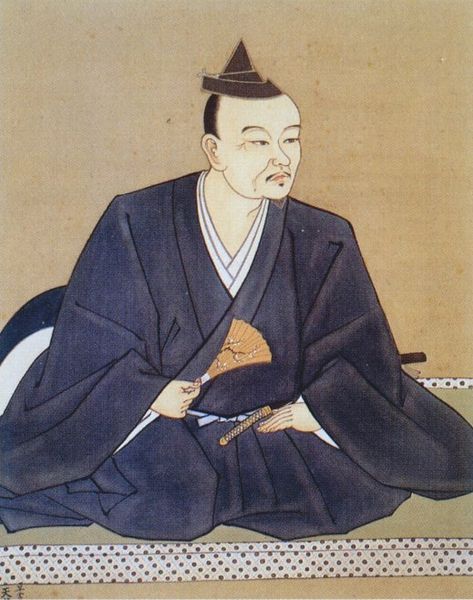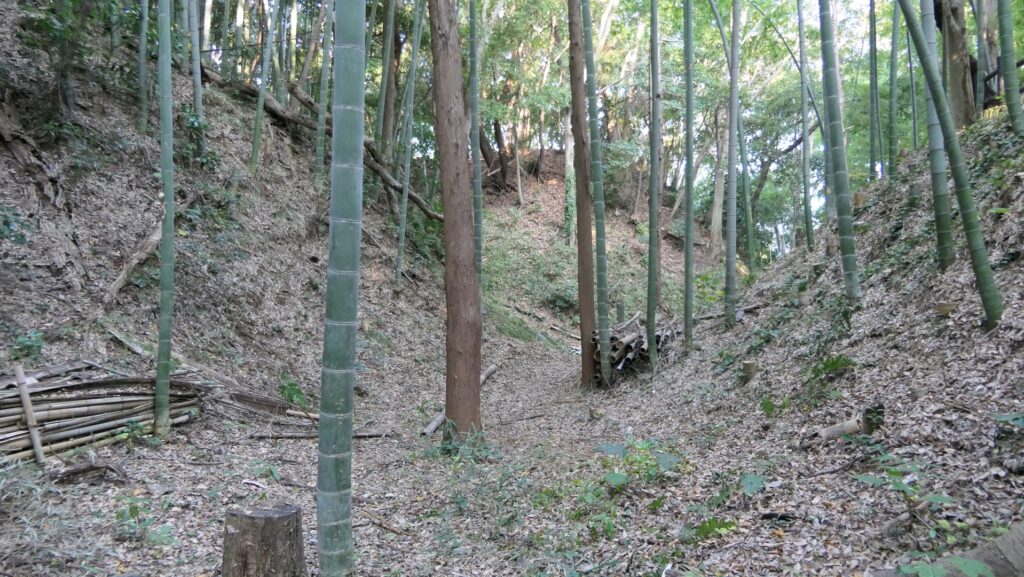Features
Parted Barbican
In fact, the ruins were partly destroyed and divided by the Daisan-Keihin Road. You can look at one of the barbicans over the road from the entrance of the Western Enclosure. You will have to go through the tunnel under the road to get there. The top of it is one of Fujizuka Mounds, called Fuji-sengen, made for worshiping Mt. Fuji since the Edo Period. It might had been a turret base before that. When you walk out of the ruins, you will get back to the city area right away.
The map around the castle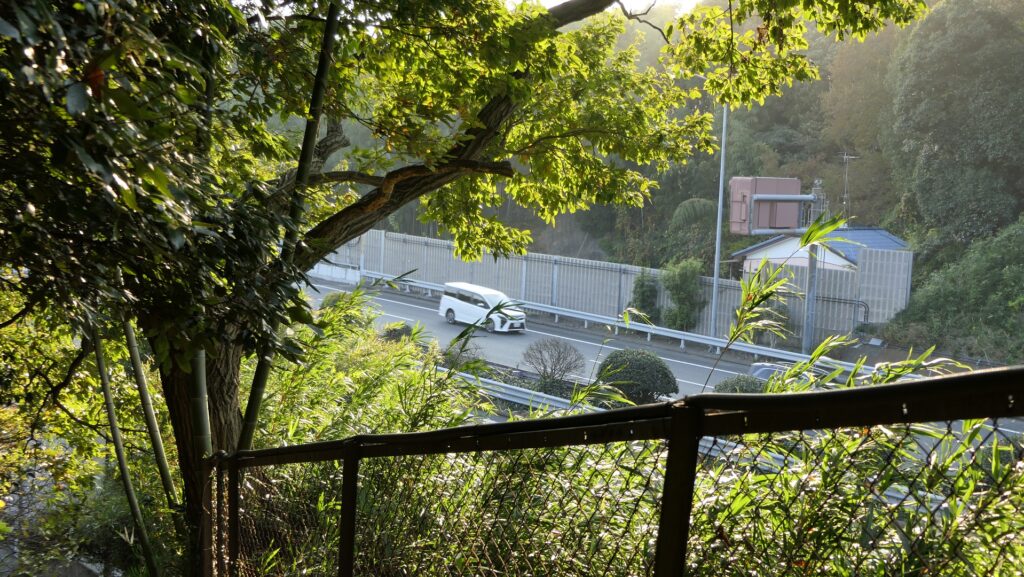
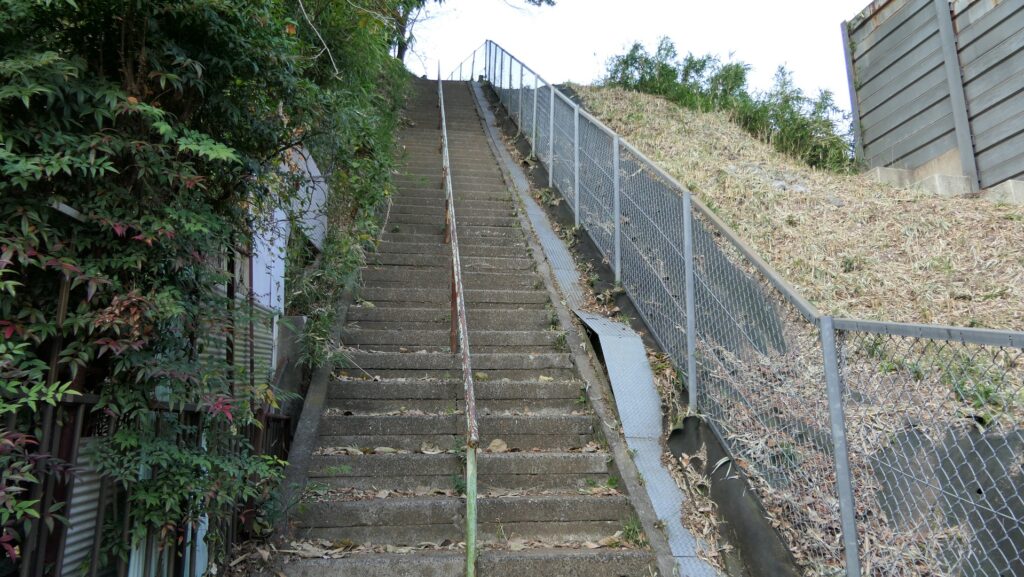
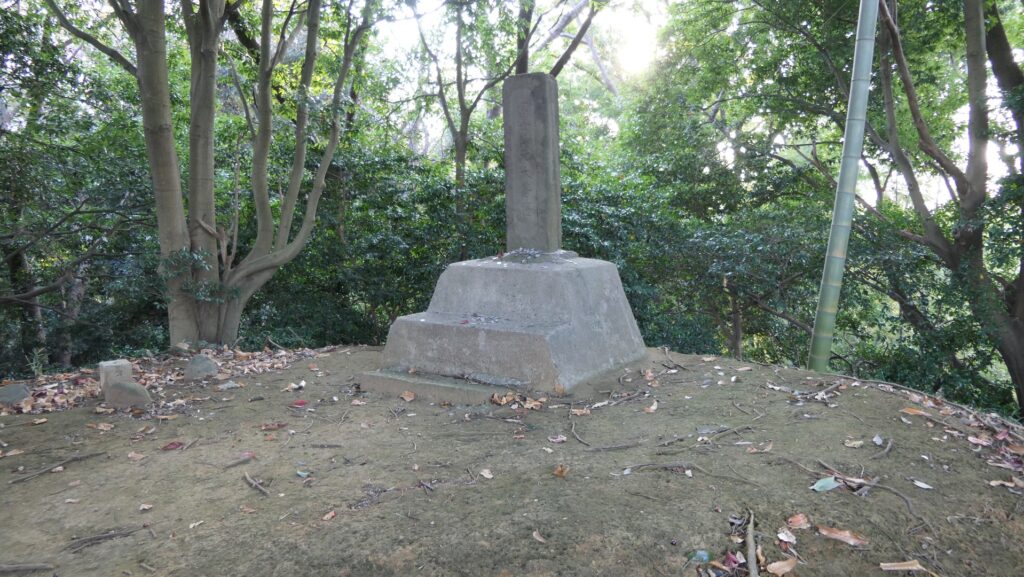
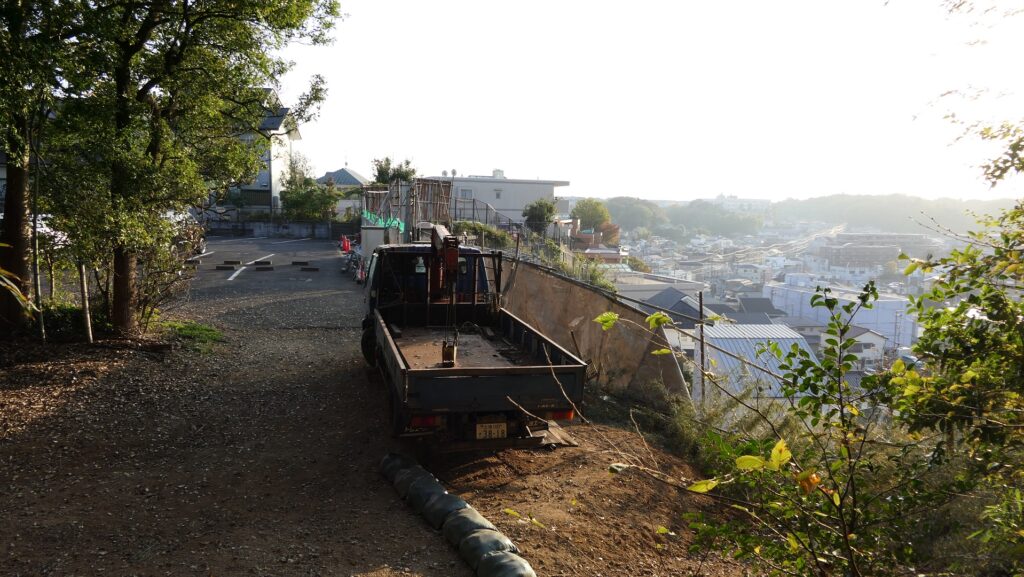
Later History
After Kozukue Castle was abandoned, the local people have called the ruins Shiroyama or the Castle Mountain. The studies about the castle started as early as in the Edo Period. However, the ruins ironically became popular as a historic site since they were partly destroyed by the construction of the Daisan-keihin Road in 1963. Through that, Yokohama City launched the Kozukue Castle Ruins Forest to preserve them in 1977. People are now interested in what the castle was like in the past.
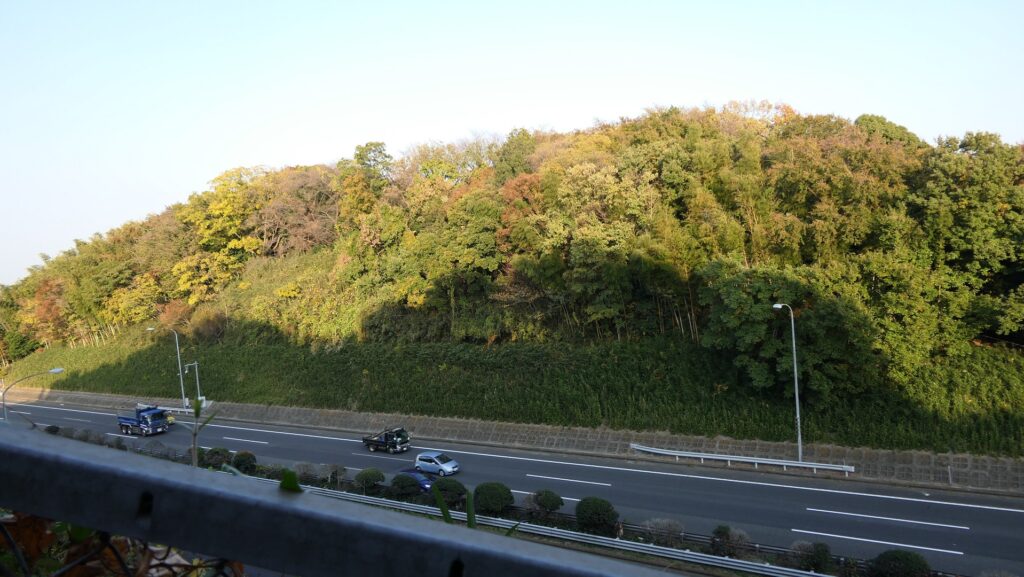
My Impression
I think Kozukue Castle is a good example of how to protect a castle with few defenders. I guess if a battle happened at Kozukue Castle when Hideyoshi invaded, this castle could survive at least over one night unlike Yamanaka Castle and Hachioji Castle.
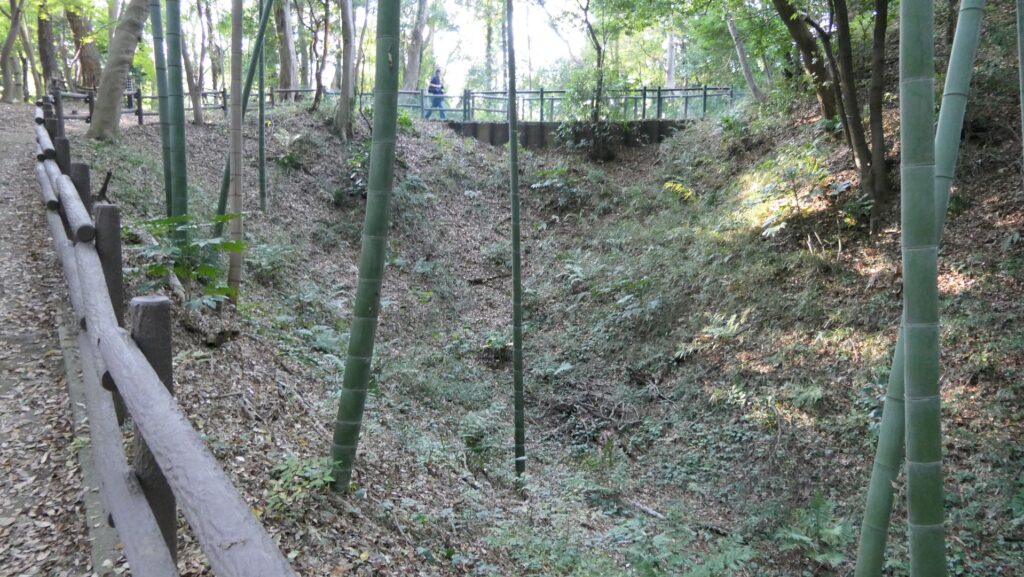
How to get There
I recommend using a train when you visit the ruins because the park has no parking lot.
It takes about 15 minutes on foot from JR Kozukue Station on the Yokohama Line.
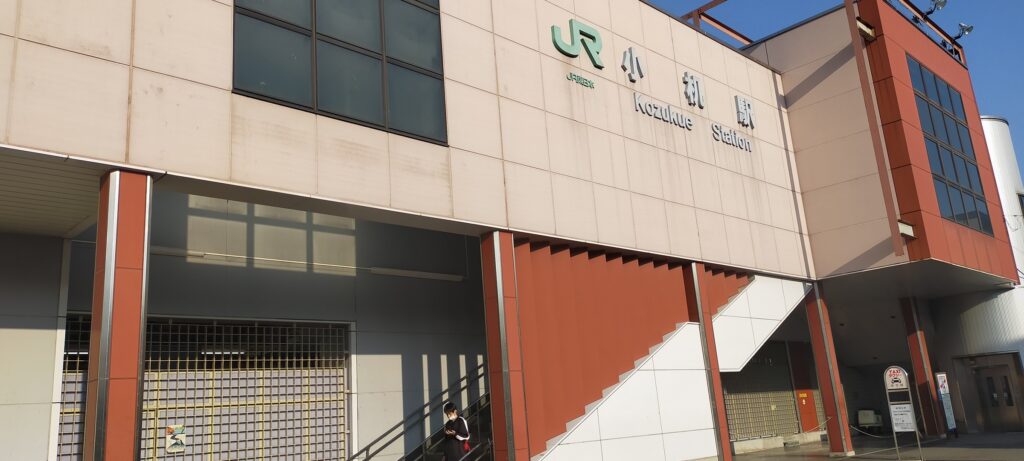
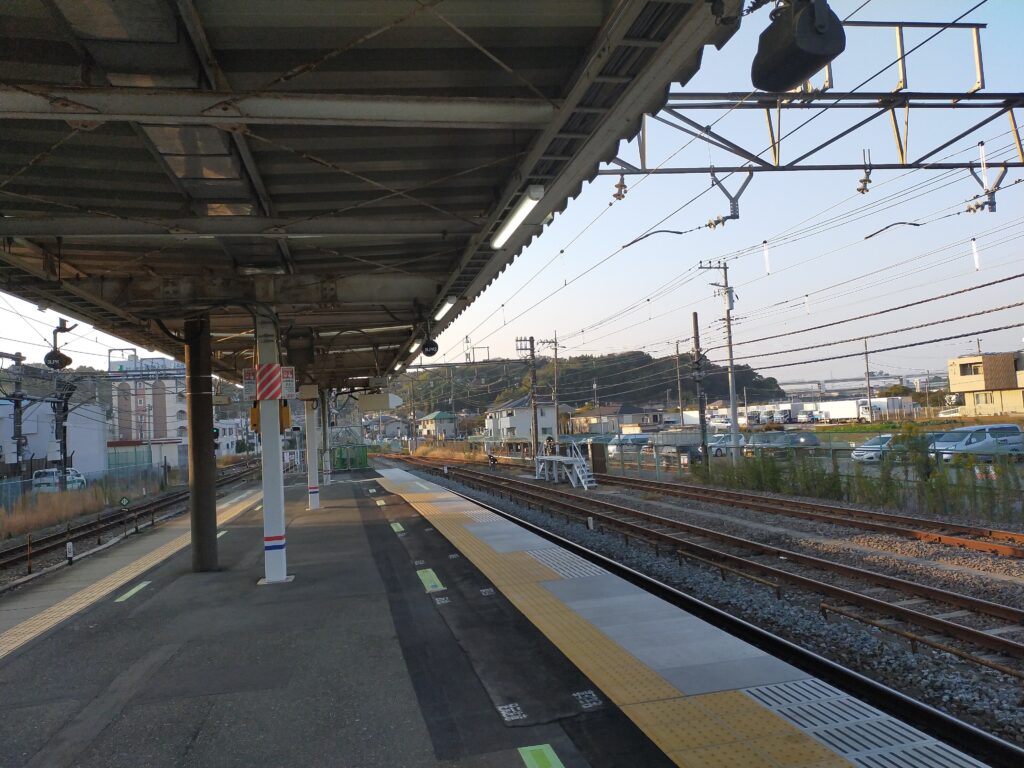
The Yokohama-Kamiasao Road (Kanagawa Prefectural Road 12) goes near the station, so turn right at the Kozukue Station Intersection and go along the street. Then, turn right at the Kozukuetsuji Intersection.
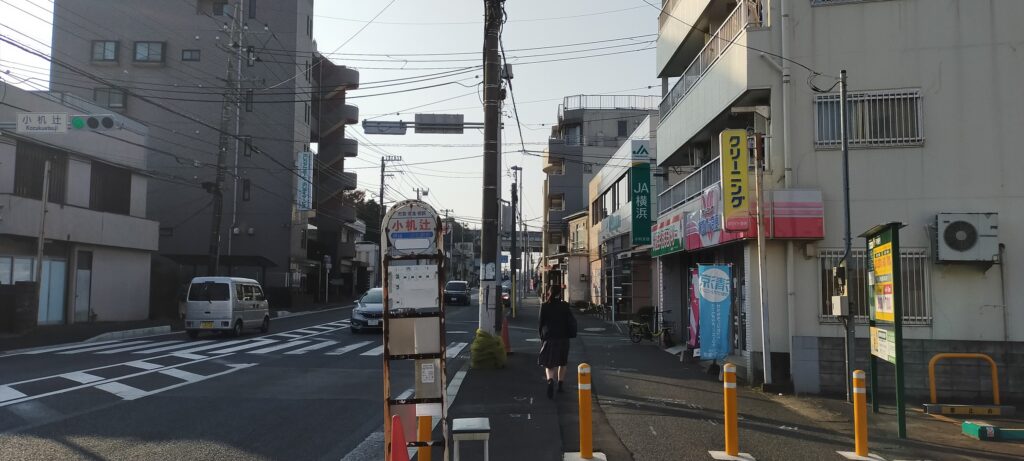
Go along the street again, cross the railway and turn left at the first intersection.

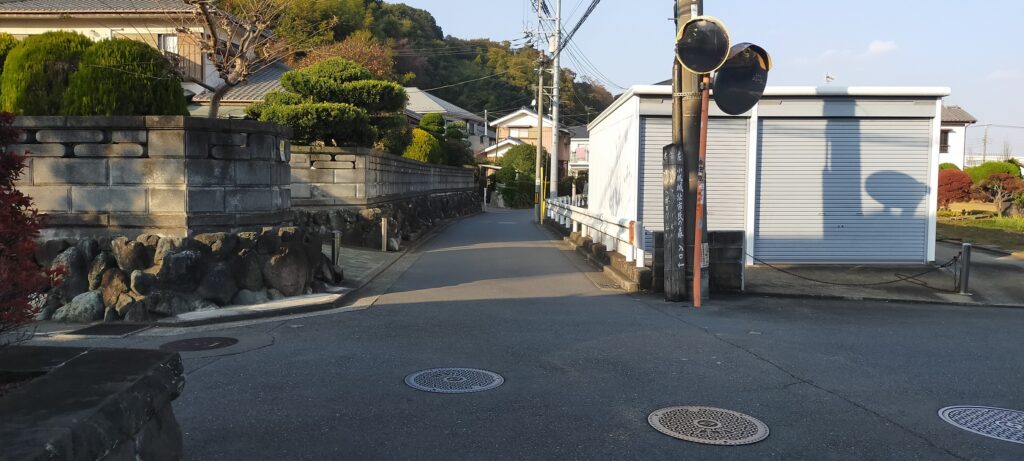
Go along the street in the residential area, and when you find the signpost for the ruins on the utility pole on the right, turn right. You will eventually arrive at the entrance of the ruins.
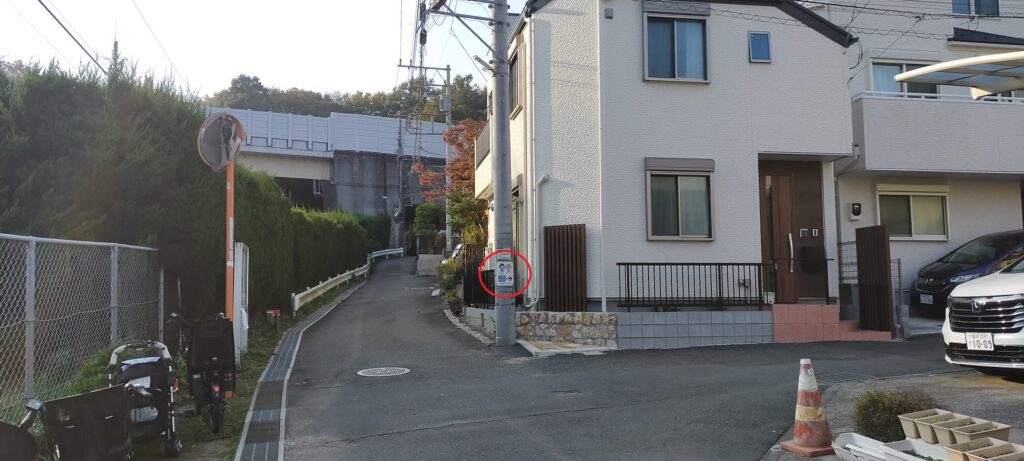
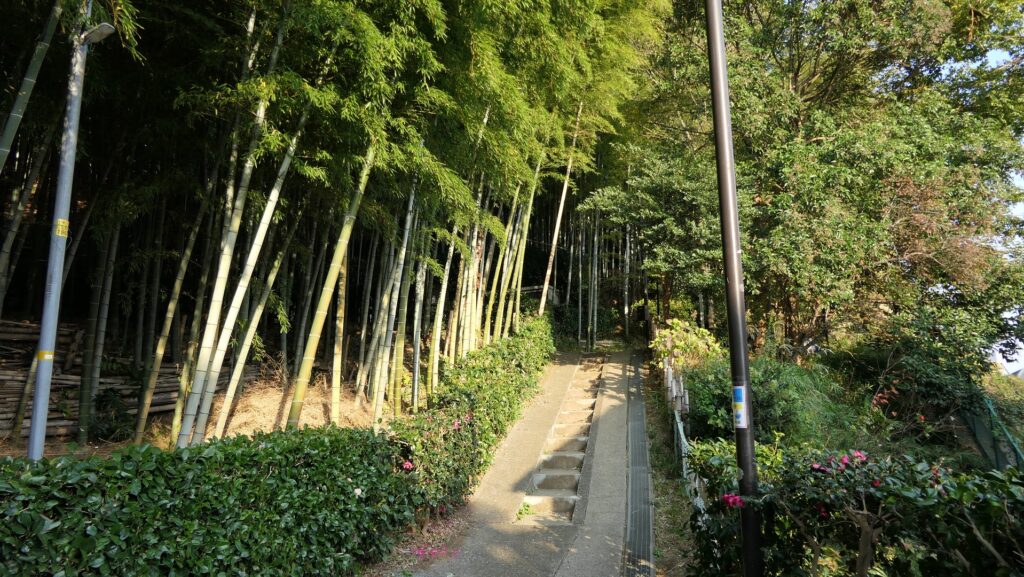
That’s all. Thank you.
Back to “Kozukue Castle Part1”
Back to “Kozukue Castle Part2”



